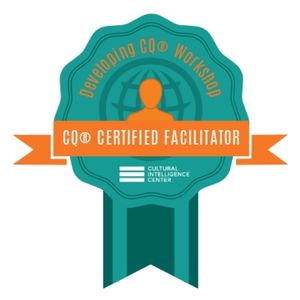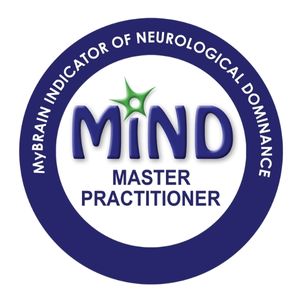Hello everybody. I’m Victoria Rennoldson, Communication and Culture Coach, and welcome to Wednesday Words with communication and cultural strategies and skills for you to learn. You can choose to watch this by clicking ‘play’ on the video above, which also has subtitles.
Or, because I know that many of you like to listen to podcasts, you can listen to the audio only version, by clicking below:
Finally, you can also read the blog as well, right here below.
In today’s Wednesday Words, I will be guiding you through how to structure your opinions, so that you can sound clear, confident, and professional.
When participating in meetings and speaking spontaneously, I know my clients want to make a good impression. They want to express their views in a way that people will listen to them. Often my clients have a lot to share – knowledge, insights, expertise, and opinions that could really help in these types of meetings. There are situations, however, where it is challenging to share those opinions, and that might be for a variety of reasons, such as:
Lack of confidence in speaking up
Some of my clients feel underconfident, especially compared to other more experienced speakers around them. They need time to formulate what they want to say, but by the time they feel ready to make their point, the discussion has moved on, and they’ve missed their opportunity to contribute their valuable opinion.
Losing the thread once you’ve started
With others, they are confident enough to start speaking, but then quickly lose their way. They might doubt themselves, believing that they’re not sounding very clear. They keep going, but somehow lose the real thread of what they’re saying, and it doesn’t come across as impactfully as they had hoped. It’s challenging because you really want to share your opinions, but you also experience hesitation. Something is holding you back.
So in today’s Wednesday Words, you’re going to learn how to structure your opinions, using a helpful framework of questions and key points which I’m going to walk you through. I will then be setting you an activation challenge!
So let’s dive in!
Key Point #1: ‘What’s the one thing?’
This is, in my opinion, an absolutely essential point. We need to start by identifying our key message; what is the one thing that we want the rest of the room to hear and understand, if they only get one thing? And it’s not a simple task – it’s almost easier to name five, six, seven, or eight things. Keeping it simple, and sticking to the point, is a real challenge. It requires a bit of thinking. You could do this in the minutes before a meeting, even writing notes during the meeting itself. But it is identifying the one thing that you want people to remember that will help you stay focused.
Key Point #2: ‘Keep it simple!’
This is another favourite of mine. I believe that expressing things simply, using fewer words and simple language, is much better for everyone. It means that we all have a better understanding of what it is you’re trying to say. So don’t worry about making it sound very articulate, or using lots of complicated words. Just focus on keeping it simple.
It also helps to try and use more images and metaphors to bring what you’re saying to life. This makes what you’re saying more memorable. For example: if you’re in a project team meeting and you’re talking about the project being hard to progress, you could say the progress has been ‘as sticky as honey’. That might not be the best metaphor, but it is something that people will remember. When it comes to presentations, I absolutely encourage you to use more images, more stories, and more metaphors, rather than using lots of words on the slide. The ideas and opinions you present will be simpler and clearer.
Key Point #3: ‘So what?’
When we are expressing an opinion, it is probably because we feel that we have something valuable to share. However, we have to be able to turn it around and think about why the other people in the room – be that in-person or virtual – should care about what we are saying? Why is it important? Why should they listen? You could even decide to make it quite explicit why you feel your key message is important, but at the very least you need to keep this question in mind.
Key Point #4: ‘Now what?’
This is something which is quite easy to forget when we are presenting our views to others. Often we are expressing an opinion that has some sort of implication or follow-up, such as an action. And there are a few different ways you can think about it. For example, what is the next step – for yourself or maybe for the other people in the room? There might also be a next step that needs to happen for people outside the room, such as certain people being informed, updated, or needing to take action. And that’s quite important to plan, particularly if they’re not at the meeting at the time. And remember to also fix a deadline. If you have key actions, make sure that everybody’s clear about what they need to do and by when.
Key Point #5: ‘Plan in advance!’
If you find you have a little bit more time to think about your meeting before you go in, I really encourage you to plan and to think about the possible dynamics in the room. For example, if we are in a meeting room with people we already know, whom we’ve been working with for a while, then we can probably anticipate how they will react as we share our expertise and knowledge. What are they likely to say? How will they react? What kind of questions are they likely to raise? What kind of problems might they have with it? And that’s very useful because it means you can plan your response. You can try and anticipate key questions and you can think about how you would answer them. You can also see what the risks might be and what your plan might be to mitigate those.
So if you do have time, but even if you don’t, I encourage you to make sure you at least follow steps one to four:
- What’s the one thing?
- Keep it simple.
- So what?
- Now what?
And, if you can, also:
- Plan in advance!
The way that I get my clients to try this out is by inviting them to spend a few minutes before a meeting – or even in the meeting – to make a few notes clearly on your notepad. If you’re in a virtual meeting, you can use stick-it notes and just stick these behind the camera, out of view. This way you can glance up quickly if you need to check your notes at any time.
Learn and activate
Let’s move now into ‘learn and activate’!
I suggest you try using the five key points I’ve outlined above and see how it works for you. Try it in a meeting, and then, after the meeting, I would like you to ask yourself two key questions, as part of your learning:
- What worked well?
- And what would you do differently next time?
It’s possible that not all of these five key points will work for you, and that’s absolutely fine. You will find what works for you and perhaps develop some of the ideas so they do work for you. And I would love to know how you get on!
I hope you enjoyed today’s Wednesday Words, which was all about how to present your opinions in order to sound clear, confident, and professional.
If this is an area where you feel you need some extra support or feedback, then please book in a discovery call with me. We can talk through your situation, and I can tell you about my Confident Communication programme, which might offer you just the kind of support you need.
I look forward to welcoming you again next week … to Wednesday Words!




